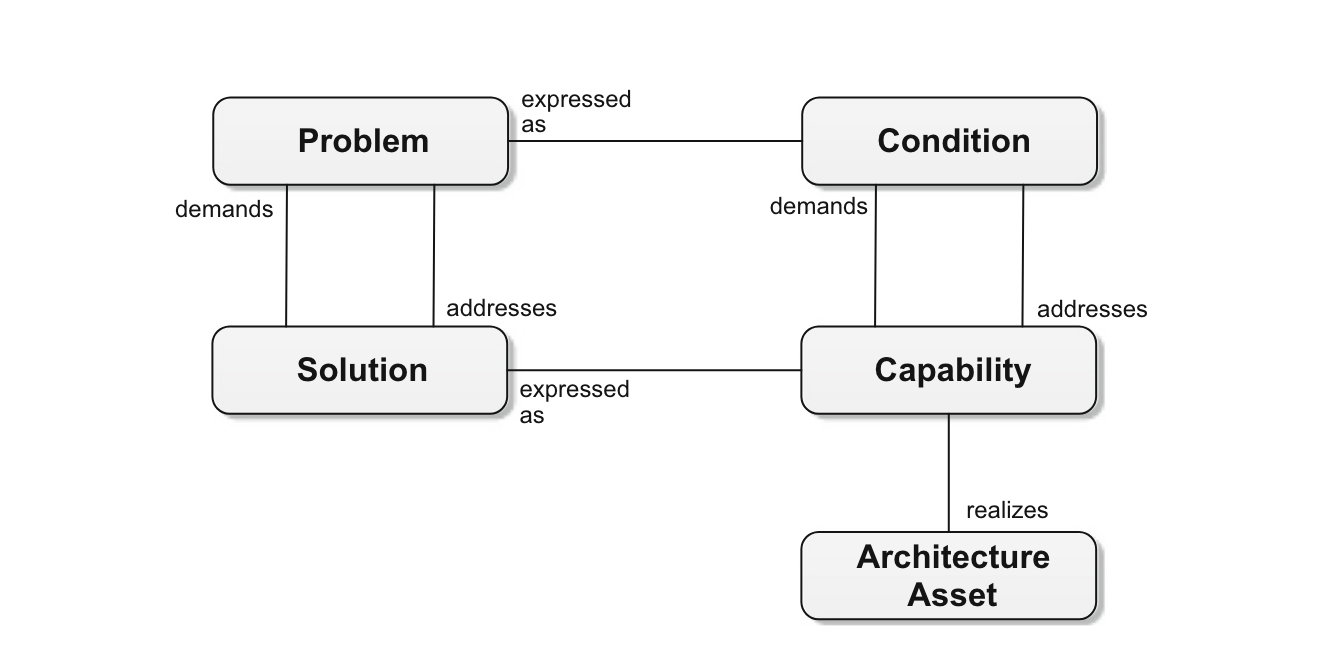ARNOLD, Ingo, 2022. Pattern Catalog. In: ARNOLD, Ingo, Enterprise Architecture Function. Cham: Springer International Publishing. p. 193–515. ISBN 978-3-030-84588-9.
The 48 patterns in this pattern catalog chapter are intensively referenced in Chap. 5, in which a generic design describes how the constituent, functional, as well as quality-related requirements for architecture functions are implemented. Each of the patterns presents, for one aspect of an overarching design, the challenge that architecture functions face and makes a proposal to adequately address that challenge—examples of particular aspects addressed by individual patterns are architecture funding, sourcing, ownership, roadmap, mandate, or methodology. The catalog divides the 48 patterns into 9 pattern groups of architecture organization, architecture objective, architecture disciplines, architecture engagement model, and communication, architecture governance, architecture elaboration, architecture asset, and architecture apparatus
ARNOLD, Ingo, 2022. Enterprise Architecture Function: A Pattern Language for Planning, Design and Execution. Cham: Springer International Publishing. ISBN 978-3-030-84588-9. doi ![]()
A solution is an answer to a problem. (Merriam-Webster Dictionary 2020) page ![]()
> 1 a: an action or process of solving a problem b: an answer to a problem : Explanation specifically : a set of values of the variables that satisfies an equation
The concept of Solution implies another concept—the concept of Problem to which a solution responds. While problems are discrepancies between a desired (future) state and an undesirable (present) state, solutions are sought and established to address corresponding problems.
Both problem and solution are abstract concepts that are mutually dependent. While a problem is represented by carefully formulated conditions such as requirements or constraints, a problem calls for a solution. A solution responds to an associated problem by providing capabilities that address the problem’s conditions. A solution, in essence, is anything addressing a problem. Architecture assets are a common means of creating solutions in modern enterprise contexts (Fig. 6.51).

Fig. 6.51 Problem-Solution Dichotomy
Architecture assets realize capabilities (solution), and capabilities address conditions (problem). An asset (as a whole or in parts) realizes one or more capabilities. Conversely, a single capability can be realized jointly by multiple assets. Similarly, a capability addresses (in whole or in part) one or more conditions, which means that a single condition can also be addressed jointly by multiple capabilities (Fig. 6.52).

Fig. 6.52 Condition, capability, and Landscape Asset
~
Ingo Arnold
Riehen, Switzerland